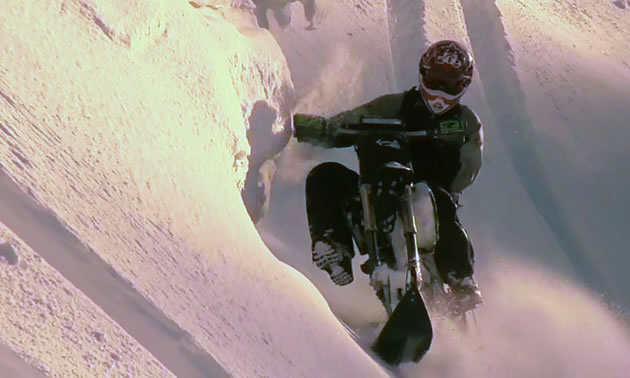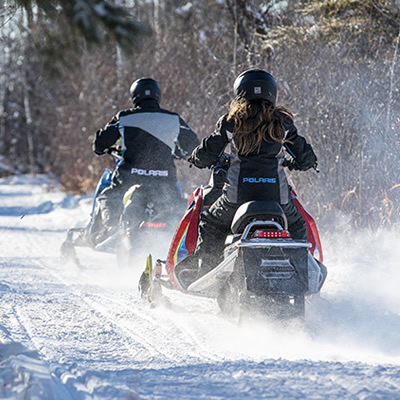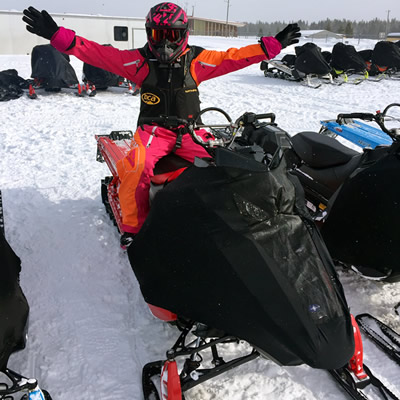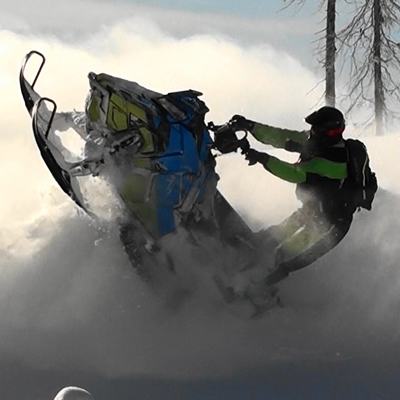When Allen Mangum first tried a snow bike in 2011, he was intrigued. The bike kit he tried was fun, but it was not really designed for mountain terrain, which is where he normally would spend his winter recreation time. The snow can get deep and the hills are steep where Mangum plays, and this snow bike kit was made for hard-pack, flatland riding.
His wheels started turning. “How can I make this better?” he thought. Already involved in the industry, Mangum developed a unique suspension for snowmobiles called the Mountain Tamer, which creates a better and more functional ride for aggressive mountain riders.
“The Mountain Tamer suspension we designed is quite like traction control,” explained Mangum. “It allows you to go through deep snow better, providing better control when climbing, allowing even pressure on the ground for maximum traction.”
Mangum was certain he could apply the same technology to the snow bike, and he did. Six years later, the Mountain Horse Kit is one of the most successful and most in-demand snow bike kits on the market. With consistent growth each year, Mangum’s company, Timbersled Products Inc., continues to stay ahead of the game.
Safety first
Along with the excitement comes a very real concern. Many new winter enthusiasts are arriving on the scene. People who normally wouldn’t enjoy the snow season are taking their conventional dirt bikes and fitting them with a snow bike track kit.
Dirt bikers may not have any prior knowledge of the potential dangers of winter, though. Avalanches, frostbite, hypothermia, terrain traps, flat light and unplanned overnight stays in the sub-zero elements are just some of the issues winter enthusiasts must be prepared for. The snowmobile communities across the world have done a fantastic job of reaching out and educating riders but now there are new players being introduced to winter.
Mangum urges all those who are considering snow bikes to get the appropriate avalanche training and gear to stay safe all winter long. Winter is much different than the spring, summer and fall months in many ways. The consequences are much higher in the winter—with less room for error. Dealers need to be actively involved in the education process as well.
“Snow bikes often traverse across the face of mountainsides and can sometimes reach areas even snowmobiles are unable to,” said Mangum. “So it is crucial that everyone makes safety their responsibility. Never ever ride alone.”
One of the best resources any snow biker can have is his or her local snowmobile club. Clubs not only protect and preserve the areas riders enjoy, they also have many opportunities for education and mentorship to help a new rider along the way.
For technical tips on snow bikes, see Customizing Your Snow Bike.







